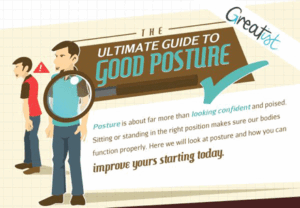Why Run When You Can Sprint?
Why Run When You Can Sprint?
Time and again, I hear from so many that the reason why they don’t work out more is because they don’t have time. Well, what If I told you that you can achieve the same health benefits of a 30-minute run in less than 60 seconds? REALLY!
As the owner of a massage practice that heavily caters to an active Boston community of runners, you can imagine that I am often asked if I’m a runner. I never hide the fact that I hate running (personally, but it’s great for business). This is not to say that I don’t ever run or believe in it or its wide array of pleasant side effects. I have simply never been one to go out and enjoy a run because I wanted to. So, imagine my joy when I learned about a study published in the Human Kinetics Journal that discussed how four 30-second sprints can ultimately produce the same number of calories burned as 30 minutes of non-stop moderate aerobic exercise.
When we run, we are primarily utilizing slow twitch (type 1 fibers) muscle fibers as opposed to fast twitch (type 2 fibers). Slow-twitch muscle fibers do the majority of the work during slow and moderate aerobic workouts. Fast-twitch muscle fibers are used for shorter, more explosive movements—like sprinting. Fast twitch muscle fibers burn significantly more calories than slow twitch muscle fiber movements. You know this is obvious by the shortness of breath you experience after doing a 30 second sprint versus jogging for 30 seconds. But the thing about sprinting is that it also helps you burn calories long after your workout has concluded via a process known as “excess post-oxygen consumption,” or EPOC. During very intense exercise like sprinting, your body actually uses more oxygen than it takes in. When your workout concludes, your body has to re-oxygenate and recover from that stress. This process burns calories, largely in the form of fat. Moreover, the study also shows that sprint intervals burn more visceral fat (fat stored in your abdomen), much better than moderate aerobic exercise. A study from the University of New South Wales found that a 20-minute cycling sprint interval program performed three times a week for 12 weeks led participants to burn 17 percent of their visceral fat. Researchers estimated that it would take seven hours of jogging a week for 14 straights weeks to produce a similar result, which equates to over eight times as many total minutes spent exercising.
Now, what if I told you that sprints are better for building muscle too? Yup! Slow-twitch muscle fibers don’t get larger the more you exercise them; fast-twitch fibers do! All you need to do is look at the body types of world class sprinters compared to world class distance runners as evidence.
Do you need more convincing? Performing sprint intervals may also have a more significant impact on your mental health than traditional cardio. We all know that regular exercise improves brain function and combats anxiety and depression-related symptoms, but new research is finding this effect may be even greater with sprint interval training. A 2017 animal study published in the journal Behavioural Brain Research concluded that “sprint interval training regimen, rather than intensive endurance training regimen, is highly potential to improve anxiety and depression through a greater increase in (brain-derived neurotrophic factor) contents in the brain.” BDNF have been associated with outcomes like depression, Alzheimer’s, epilepsy, anxiety and impaired learning. BDNF levels naturally decline with age, but we can increase them with proper exercise and diet. There’s also research that suggests sprints may help people learn faster better than just gentle running.
Now if you’ve read this far, you’re probably saying to yourself, “30 second sprints seem like really long durations to sprint.” Well…. more great news! Although much of the earlier research in this field focused on performing four to six 30-second sprints with a few minutes of recovery in between, recent findings have found similar benefits can be achieved by performing sprints of a much shorter duration. All the available evidence suggests that protocols with fewer (two to three) and shorter (10-20 second) sprints are as good or better than the classic protocol at improving important health markers.
Crude Non-Scientific Study
For the past few weeks, I have incorporated sprints into my training. Not only do I notice a change both mentally and physically, but I also find myself excited about doing sprints. Never, EVER have I said “I can’t wait to go for a run today.” If you are looking to jump start your summer routine or if you are like me and are seeking a way to avoid distance running, then I strongly encourage you to not run, but sprint to your next fitness goal this summer!
Ready to #feelbetter?
You're just a click away from a wicked good massage!
-

60 Minute Massage Gift Card
$170.00 Add to cart -

90 Minute Massage Gift Card
$255.00 Add to cart -

Mini Aer Small Room Air Purifier
$149.00 Add to cart -
Sale!

Thera-Pearl Sports Pack/Hot Cold
Original price was: $14.99.$12.99Current price is: $12.99. Add to cart -

3 Somadome Sessions Gift Card
$135.00 Add to cart -

TheraBand CLX Connective Loop
$14.99 Select options -

6 Somadome Sessions Gift Card
$270.00 Add to cart -
Sale!

Biofreeze
Original price was: $14.99.$12.99Current price is: $12.99. Add to cart
Passion Mountain
I was at an event recently and was asked by somebody how I could STILL be so passionate for what I do. He said, “What I mean is that you talk about what you do with the passion of child flipping through a new pack of baseball cards. I wish I was that passionate about…
Read MoreFish You Should Scale Back On
New Englander’s love their seafood and we deepen our love affair every summer when our favorite crustaceans, ‘lobstah’ is a plentiful. But what is the best seafood for us and what are the ones that we should be staying away from regardless of how yummy they may be? Monterey Bay Aquarium has combined data from…
Read MoreSports are a Great Metaphor
It’s no secret that my life has always revolved around athletics. From my early days playing pop warner football, through my college years of lacrosse and on into the various community leagues since, being part of a team has always been where I feel most comfortable. What I enjoy most about being part of a…
Read MoreWhat is an Expert?
“An expert is someone widely recognized as a reliable source of technique or skill whose faculty for judging or deciding rightly, justly, or wisely is accorded authority and status by their peers or the public in a specific well-distinguished domain.” – Wikipedia This past month I flew to Atlanta to present a few classes in…
Read MoreThe Power of a Hug
Originally Posted 5/1/2014; following the 1 year anniversary of the Boston Marathon Bombings and our mission to rebound after these horrible attacks on our city. We helped orchestrate the ‘One Run for Boston’; a 3328.2 NON-STOP running relay from LA to Boston, raising over $500K for the victims and survivors of the events of 4/20/2013.…
Read MoreTips from the Table
Without fail, every marathon season, I am asked by my patients, what kind of advice I would offer up to them as they prepare to run the Boston marathon. I first admit that I have never (nor will ever) run a marathon, but given my unique insight of spending 1000’s of hours alone in a…
Read MoreShoulder Impingement
The glenohumeral joint is a highly complex articulation. It has the greatest range of motion of any joint in the body. However, its increased motion occurs at the expense of stability, requiring the soft tissues to play a more critical role in maintaining joint integrity. As a result of increased mechanical demands, numerous soft-tissue injuries…
Read MoreTrain, train, train. Train of fools.
In my seventeen years as a massage therapist, I am still amazed by some of the things I see in my office. Being situated 1/10th of a mile from the finish line of one of the most prestigious marathons in the world, the Boston Marathon, we see more than our fair share of runners coming…
Read MoreAchilles Tendon Disorder
Achilles Tendon Disorder Massage therapists see many clients with active lifestyles. Running, jumping, dancing, climbing, or any number of other activities can put serious stress on the Achilles tendon (AT). AT disorders also can contribute to biomechanical disorders in the foot and lower extremity. That is why it is important for the massage practitioner to…
Read More


